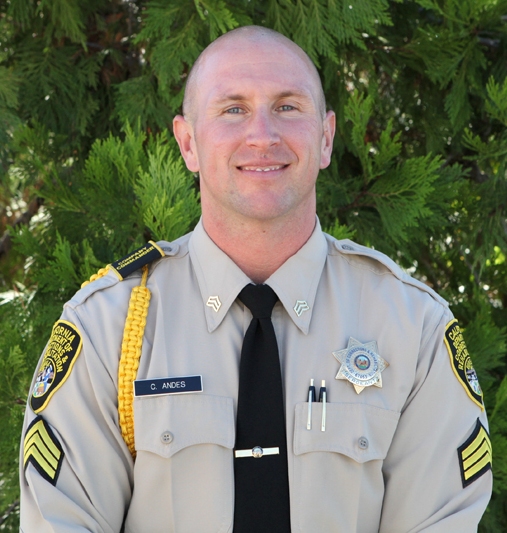An Academy sergeant is responsible for ensuring CDCR officers get the training they need to perform the important job of keeping themselves, fellow officers, and inmates safe inside one of the nation’s largest correctional systems.
They’re the instructors at CDCR’s Richard A. McGee Correctional Training Center and right now, they’re busy with the newest crop of CDCR cadets and potential future instructors.

There is a constant rotation of cadet classes, some just beginning training, some in the middle, and some close to reaching the ultimate goal of the program — graduation.
Not only do the academy sergeants instruct new recruits, but they also train and re-train current CDCR officers.
Academy sergeants have to be dedicated, punctual, and reliable. The scheduling of the courses is a daunting task, as evidenced by the multi-colored charts that fill two walls inside one of the academy’s offices.
Once an academy sergeant is assigned a course, it’s time to put the knowledge to work. Some of the courses include tactical simulations, firing range, and various classroom-based courses.
Today, Delta Company is being led through the academy by Company Commander, Sergeant Chance Andes. He’s in charge of the 30 cadets, and it’s clear he’s dedicated to seeing them all succeed.
From the beginning of Delta Company’s training, Andes has encouraged the cadets to take leadership and form camaraderie.
Today, he’ll provide feedback to each of the cadets during the tactical simulation.
Fellow academy instructors suit up in protective gear and prepare to enact a training scenario over and over. The instructors play the role of inmate and the cadets individually have to protect themselves from the two “inmates,” control the situation, and use their personal radio to request additional officer response.
After each cadet goes through the simulation, Andes pulls the cadet aside and provides individual critiques that could potentially save the cadet’s life one day.
While several instructors are inside the academy’s training room going through the attack simulation, some are outside with the other half of the cadets simulating a scenario in which the cadets have to quell a group disturbance on the yard.
In this simulation, the instructors are side-by-side with the cadets, walking them through each procedure that must be taken when processing inmates onto the yard, and what must be done when a disturbance breaks out.
The information given in these simulations can be the matter of life or death. For example, cadets are told about the methods inmates use to distract officers during weapon searches. They also explain how to back up a fellow officer when a fight breaks out on the yard.
On other days, an academy sergeant may be required to transport firearms for their company’s day at the firing range. Or, they could bring gas masks and chemical agents for another training day.
All academy sergeants must obtain their Class B driver’s license so they can transport a bus full of cadets to the range or nearby institutions. Mule Creek or Folsom state prisons allows cadets a chance for hands-on learning.
“(Academy sergeants) have many duties they have to do here at the academy,” Academy Lt. Leard Mapes said. “They have to teach everything we have here. They have to know all the subjects, and possess all special certifications for courses requiring them.”
They’re the trainers of the trainers and they have to be an expert in the field of corrections. They have to be flexible, ambitious, and dedicated to ensuring CDCR has a well-trained, quality workforce.
There’s a lot riding on the shoulders of an academy sergeant. Many times they’re the cadets’ first real source of information on corrections.
“We see people who may know nothing because they’re coming from a banking background or a mechanic background,” Andes said. “It’s beautiful because you see them with these blank stares at the beginning, and then it all comes together.”
By Dana Simas, CDCR Public Information Officer

Learn how to become a correctional officer.
Follow CDCR on YouTube, Facebook, X (formerly Twitter). Listen to the CDCR Unlocked podcast.